Estimated reading time: 9 minutes
There are three mistaken ideas when it comes to survival food. Not everyone shares these ideas, yet they still exist. I have even seen people who espouse those ideas in the prepping community, although I wouldn’t normally expect to. The ideas are:
- Buy what your family will normally eat.
- To be survival food, it has to be purchased as packaged survival food, including MREs.
- You have to buy survival food in bulk.
There’s nothing wrong with buying survival food in bulk or buying packaged survival food, although buying packaged survival food is more expensive than buying the food in the supermarket, especially MREs.
On the other hand, buying what your family would normally eat is a really bad idea, considering that either means fresh food—which will spoil if the power goes out—or buying junk food, which might fill them up but won’t provide nutrition.
Want to save this post for later? Click Here to Pin It On Pinterest!
For a survival diet, we need to concentrate on the three macronutrients: carbohydrates, fats, and proteins. While all the myriad of micronutrients are important for maintaining health, in a survival situation we’re talking about keeping our bodies alive. Those bodies can do just fine for a short period of time (like 30 days) without worrying about giving them all those micronutrients.
That means that when we are looking for food to stockpile, we should be looking for foods that are strong in the macronutrients, at least for the short-term. If we’re building a stockpile to survive a long-term disaster, that’s another thing entirely. So, what should we be looking for?
Baking Necessities
Flour (listed below) isn’t going to do much good without baking powder, baking soda, and other baking necessities.
Bouillon
Bouillon is also known as “soup starter,” it’s a dry version of broth. Since soup is a survival staple, make sure you have plenty of bouillon on hand. That will go a long way towards making your soups more palatable.
Canned Meats
The hardest and most expensive of those macronutrients to find is protein. We are accustomed to getting our protein from meat, poultry and fish; all of which either have to be refrigerated or frozen to keep them from spoiling. But we can’t count on having power for refrigeration during a time of crisis.
Fortunately, there are a considerable variety of canned meats available. While not as tasty as fresh meat, they at least provide the necessary nutrition.
Canned Tuna or Salmon
These canned fish options are not only rich in protein but also provide essential omega-3 fatty acids. They have a long shelf life and can be eaten straight from the can or added to other dishes. Canned fish is a versatile and healthy addition to any emergency food stockpile.
Coffee & Tea
Most of us need a good cup of coffee or two to start the day. I guess we could call this adult comfort food. The caffeine is also useful for keeping us awake when standing night guard.
Cooking Oil
Cooking oil is another necessity for baking and cooking in general. Buy more than you think you need, as you will probably go through it.
Dried Beans
The other good source of protein is beans. Dried beans will keep easily for a prolonged period of time, can be prepared in a variety of ways, and provide that protein. If your family doesn’t like eating beans, hide them in soup and other dishes.
Dry Pasta
Spaghetti is a comfort food, which just about everyone likes. It’s one of those things you can pretty much always get kids to eat. It’s also a great source of carbohydrates, just like rice. One nice thing about spaghetti is that you can add just about any type of meat, including canned meats that your family might not like, and turn it into a complete meal. Pasta can also be used for making casseroles.
Flour
A lot of the carbohydrates we eat come from baked goods, whether that is in the form of the bread around our sandwich or the donuts we shouldn’t eat for breakfast. But with the stores closed, bread and other baked goods won’t be available. We’re going to have to bake it ourselves, which means having a goodly supply of flour; both wheat flour and for variety some other grains.
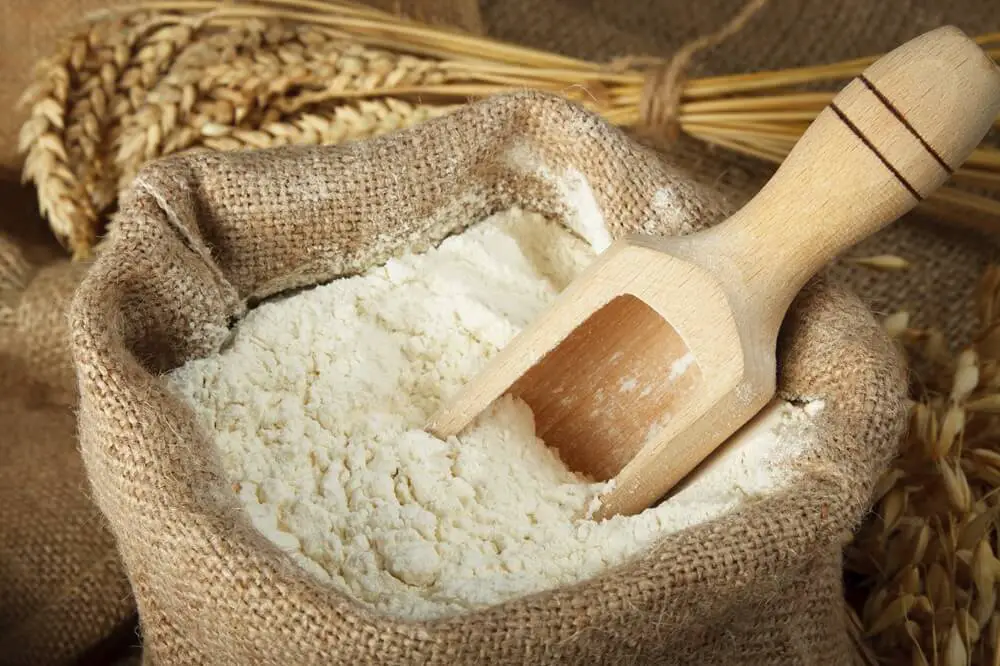
If you’re planning on storing flour for a long period of time, it’s best to store it as whole grain and grind it yourself. That means adding a good manually-operated mill to your prepping stockpile. You won’t be able to find that at the grocery store though. Better plan on spending several hundred to a thousand dollars for it, when you do find a good one.
Honey
Honey is a natural sweetener that never spoils. It's a great source of quick energy and can be used to sweeten beverages or foods. Honey also has medicinal properties, including antibacterial and antifungal benefits, making it a multipurpose item for emergency preparedness.
Instant Potatoes
Dehydrated potato flakes or instant potatoes are an excellent carbohydrate source that stores well and is easy to prepare. They can be rehydrated quickly with hot water and provide a comforting, familiar food in stressful situations. Instant potatoes are also versatile, serving as a side dish or a base for other ingredients.
Jelly
You'll need jelly to go with the peanut butter (listed below).
Lentils
Like beans, lentils are an excellent source of protein and can be stored for a long time. They cook faster than most dried beans and don't require soaking, making them a practical choice in a survival situation. Lentils can be used in soups, stews, or as a side dish, providing essential nutrients with minimal preparation.
Oatmeal
Breakfast cereals don’t keep well, but oatmeal does. Not only that, but since it’s not filled with air, it takes up less space to store. Oats, whether in the form of oatmeal or Cheerios, are considered heart-healthy food, because they help reduce cholesterol.
Peanut Butter
Peanut butter is an important comfort food, especially for kids. It’s also an inexpensive way of making lunch, if you’re baking your own bread.
Powdered Milk
Since milk spoils so quickly, it’s more or less impossible to stockpile liquid milk for survival. Evaporated milk would work, but that’s a bit costly. Nevertheless, if your kids love drinking milk, then evaporated milk can be converted to regular milk by mixing it 50/50 with water. The taste and consistency will be similar.
We also need milk for baking. Rather than the expense of evaporated milk, powdered milk will work just fine. It’s inexpensive and will keep for a long time. In my personal experience, the Mexican brand “Lido” has the best flavor.
Rice
Rice is probably one of the most common sources of carbohydrates in the world. It’s easy to cook, stores well, (especially white rice) and inexpensive. Rice can be eaten plain, used to sop up gravy and other sauces, or used to add bulk to soups.
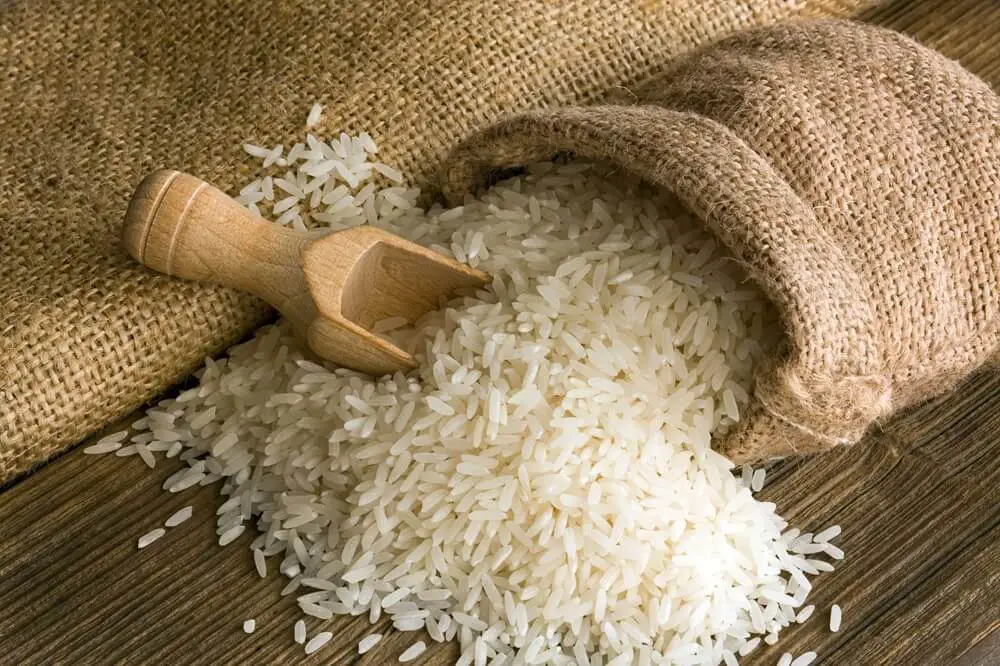
Salt, Spices & Condiments
You’ll obviously be feeding your family a different diet than what they are used to. It’s much easier to get them to accept those strange foods when you can get them to taste more like what they’re accustomed to. That’s where condiments and seasonings come in.
Put together a good collection of sauce recipes and make sure you’ve got the spices to make them. Salt is almost always one of those, but our bodies also need salt to survive. If you’re not going to be eating all that prepared food and salty snacks to get your salt, you’re going to need it in your food.
Condiments, like spices, help make food palatable for the family. You can put ketchup on just about anything and a kid will eat it. One nice thing about those condiments is that they will store virtually forever due to the high acid content. That kills any bacteria that try to get into the condiments, keeping them fresh and safe to eat. The one big exception to that is mayonnaise.
Spaghetti Sauce
Spaghetti sauce is one of the greatest food inventions on the planet; not so much for its nutritional value, as for its flavor. You can cover that road kill or the eggplant from your garden with spaghetti sauce, and it will taste like spaghetti. That makes it a great way of getting your family to eat things they might otherwise turn their noses up at.
Xanthan Gum
Eggs are another necessity for baking, even more important than milk. But unless you have your own chickens, the eggs from the grocery store won’t keep for a long time without refrigeration. Never fear though; there’s a way around this, it’s to substitute xanthan gum for eggs.
The main purpose of eggs in baking is that the protein in the egg whites is what binds the ingredients together, keeping the bread, cake or cookies from falling apart. Xanthan gum will do that as well. To make an egg substitute out of xanthan gum, whip 1/4 teaspoon of the gum in 1/4 cup of water. Put another way, you should use 1/8 to 1/4 teaspoon per cup of flour in the recipe.
Another Addition – Canned Fruits & Vegetables
I almost left canned fruits and vegetables off this list because they are one of the prime sources of those micronutrients I was talking about earlier. But they are also a great source of carbohydrates, so they got on the end of the list.
One nice thing about canned foods is that they last for years; we really don’t know how many years. There have been canned foods that have been opened up after 60 or 80 years and still found to be edible. As long as the can retains its integrity, there’s not much that can go wrong with the food inside.
A Point About Packaging
Canned foods are about the only thing that comes from the grocery store packaged for long-term storage. Many of the foods I’ve mentioned above are dried, not canned foods.
While the very fact that they are dried will keep bacteria out of them, allowing them to be stored for a couple of years, it will not keep insects and rodents out. To preserve the integrity of that food, it would be a good idea to repackage it in something sturdier than the plastic bags that it comes from the grocery store in, either canning jars or 5-gallon plastic buckets.
Like this post? Don't forget to Pin It on Pinterest!
You May Also Like:

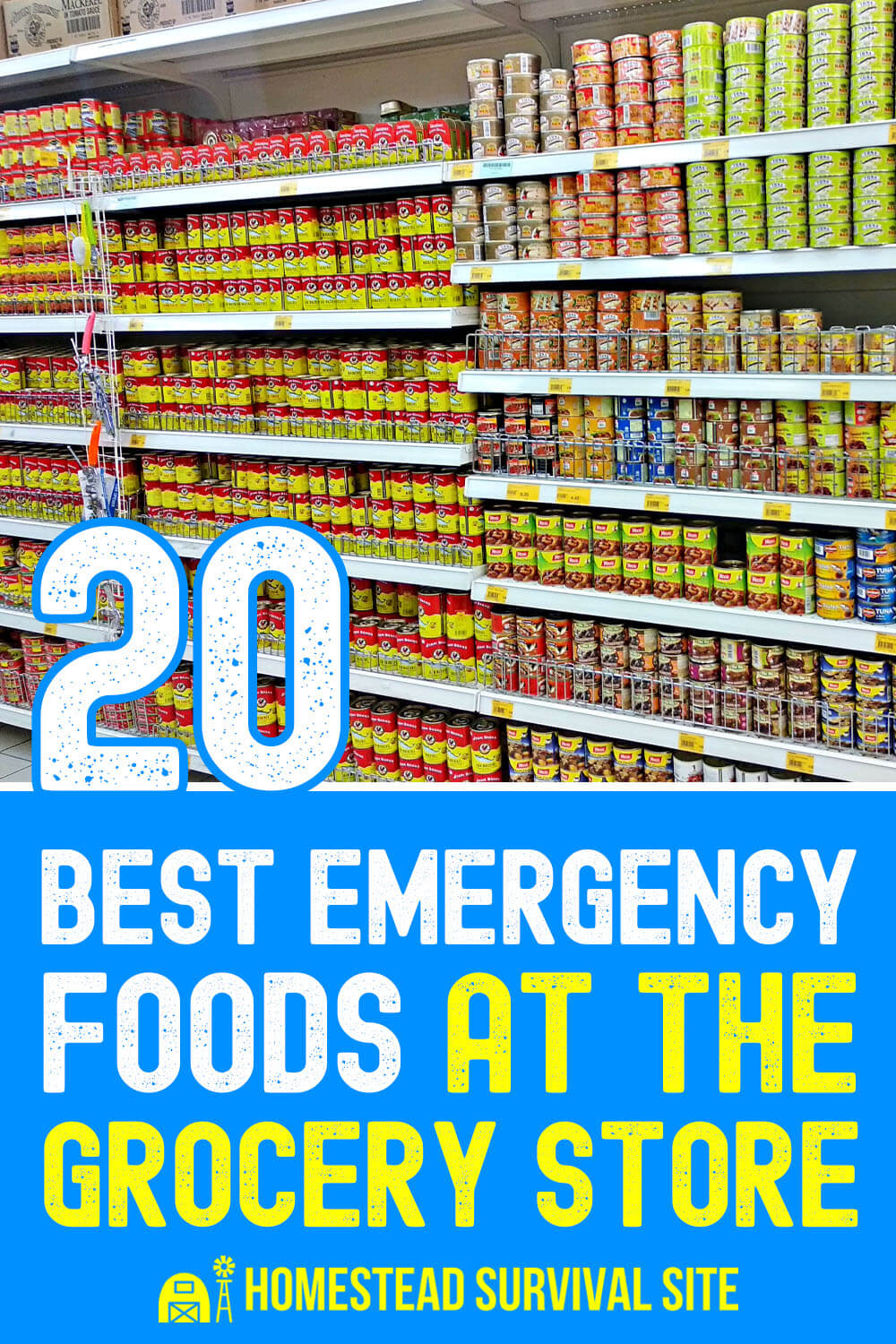


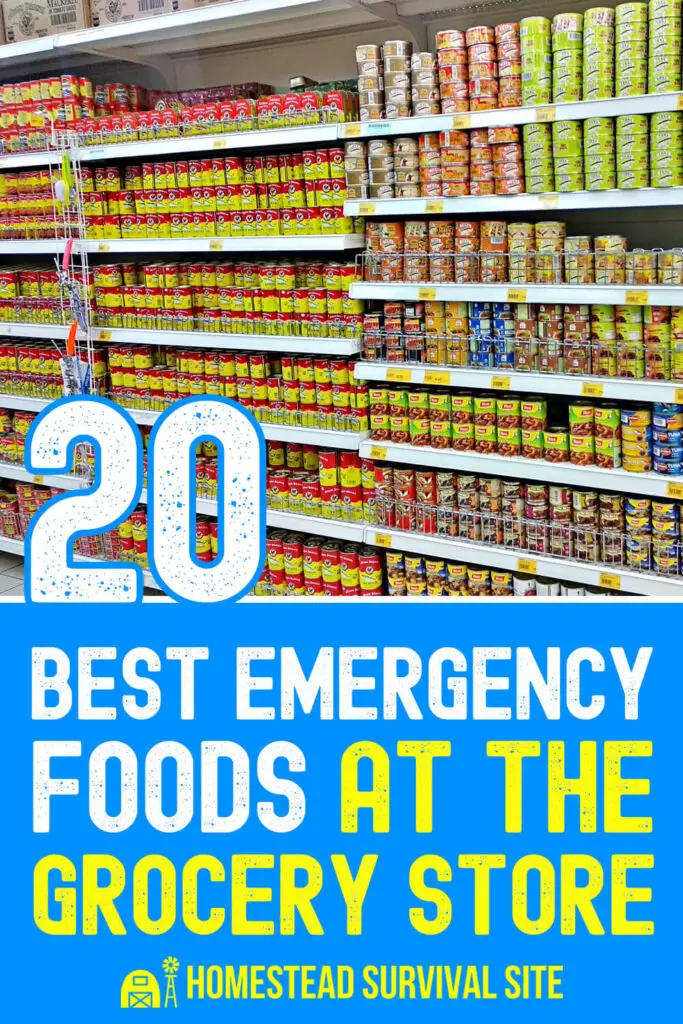

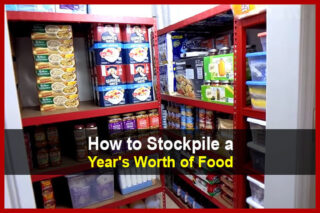
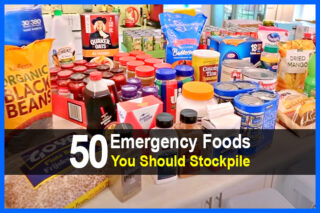

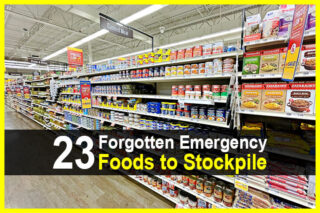
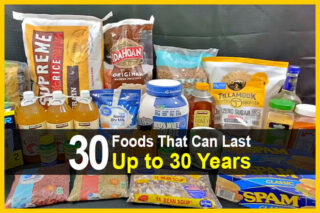
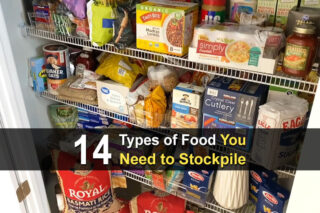

jelly is NOT a best emergency food, you’d be better off buying honey. If you have not tried a peanut butter and honey sandwich try it, then think about the indefinite shelf life of honey compared to jelly if you had no power or refrigeration – jelly will mold, honey will not, and you can sweeten drinks with honey also..
The correct name of the Mexican milk you mentioned is “Nido”, NOT Lido, by the way, it belongs to the well known Nestle group of foods.
also, invest in a good vacuum sealer to store foods for longer. Just remove from package and vacuum seal/label.
get only the food you and your family are going to eat. there is absolutely no point to have baked beans if no one like baked beans or peanut butter if you are allergic to peanuts. how much and what kind of stuff do you need: let’s assume I am telling you there is a extinction event but I can’t say what is the nature of the disaster or how long it will last and I can only say it’ll happen within the next 100 years. how do you plan then? you know it may or may not happen in your lifetime but it may as well be tomorrow, next week, next month or next year. the nature of disaster can be nuclear attack and/or meltdown, earthquake or meteorite strike which need different kind of preparation. are you going to stock everything the same way regardless? and for how long? do you plan whether it is possible to collect what you need from nature? and what if you can’t?